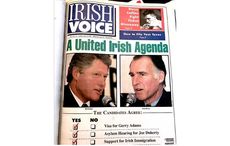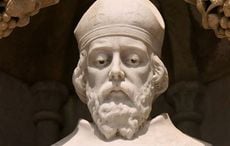Hillary Clinton's sensational defeat in the U.S. presidential election played out for me last like the description of the man who went bankrupt.
Asked how bankruptcy happened, he said it was slowly at first then all of a sudden…
So it was with the electoral map that doomed Clinton on Tuesday night. As a Clinton supporter, buoyed by polling showing her ahead, I was very confident.
Until I wasn't...
By mid-afternoon on Tuesday her staff were positively giddy, brandishing polls and exit interviews that showed their candidate up by four or five points.
The first signs of illness in the patient were not noticed until the Florida and North Carolina vote counts were displayed on screen.
Both were known to be tight, but Clinton needed to duplicate Barack Obama’s strategy of running big in urban areas and holding on in rural ones.
Soon it became apparent that Donald Trump was running up bigger margins of victory in rural Florida than Mitt Romney (how good he looks nowadays) in 2012. In addition, especially in North Carolina, the African-American vote was down on when Obama ran which was understandable, but not the extent of it.
That was a pattern repeated across the map, with Trump handily beating Romney’s numbers in rural areas and Democrats disappointing in their own redoubts.
Soon the infection began spreading. African American turnout was well lower in North Carolina and suddenly Virginia, which had seemed solidly in the Clinton corner, was deemed too close to call.
The massive crowd at the Javits Center on Manhattan's West Side who had come to party and applaud the first women president suddenly grew quieter.
Soon the vast glass-enclosed roof structure seemed like a mausoleum, like somewhere an incredible career culminating in the presidency had come to die.
Upstairs in the nearby Peninsula Hotel where Bill and Hillary were staying in -- where else? -- the presidential suite, the mood had grown especially somber.
Aides described Bill Clinton, still the greatest vote counter in American politics, frantically pursuing voting charts and muttering about the working class white vote.
It was easy to understand the fear. The Democratic Blue Wall, the 18 states that had voted for the party candidate since 1992, was suddenly crumbling.
The Upper Midwest was where the infection raged. Wisconsin, considered so safe that Clinton didn’t even campaign there, was under pressure. So was Ohio, the great bellwether state, and so, amazingly, further south was Pennsylvania, the lynchpin of the blue wall strategy.
Over at Trump HQ in the Hilton Hotel, the exact opposite exercise was underway.
There, a crowd that had come to witness their candidate perform well but probably not well enough were suddenly energized by the explosive news from the massive television screens blasting away over their heads.
Could the impossible happen? Could the man behind in almost every poll on Election Day and widely dismissed as a political interloper with few skills be suddenly charging hard for the White House?
It was indeed possible.
It has been a wild ride. Two weeks before he entered the race on June 26, 2015, Trump and Bill Clinton, then friends, discussed whether he should run or not. The discussion topic had never been revealed but it is believed that Clinton encouraged him, thinking he would run interference with other more serious candidates like Jeb Bush.
Trump was widely mocked after his speech about entering the race because of his inflammatory comments about Mexican immigrants. But he knew exactly what he was doing: divide and conquer.
So he took off with the working classes, who had long trumpeted immigrants as job stealers and were mad as hell about Washington and Wall Street elites.
Suddenly his 16 challengers melted away, dispatched by ridicule, hyperbole and sometimes dirty politics as when Trump insulted the wife of Ted Cruz, his Texas senator opponent.
In the summer and early autumn his campaign appeared to stall, with Hillary Clinton’s convention speech far outranking Trump’s. Then Hillary beat him, according to independent polls, in all three debates. She looked on her way to victory.
Then came the two October surprises, the drip-drip of WikiLeaks and the astonishing intervention of the FBI chief James Comey reopening a previously closed investigation into her email server.
Comey said “nothing to see here” a few days before the election, but the damage had been done as the polls closed in rapidly once again.
Clinton still seemed to have the edge going towards Election Day, but Trump had by far the better television presence and command of the all-important medium.
Clinton’s campaign, awash with polls, internal numbers and hi-tech modeling, lost sight of the voters and seemed to lose sight of what was happening to their firewall in the Midwest.
Only Bill Clinton kept asking, "What are we doing about blue collar workers? There was no reply from campaign chairman John Podesta or director Robby Mook.
The answer as the world saw on Tuesday was nothing. Essentially ignored by the Democrats and embraced by Trump, blue collar, white ethnic Americans cast their vote for the Republican candidate for the first time in decades.
And as a result Donald Trump won the White House.
Yes, that Donald Trump. Do we wake or dream?




Comments